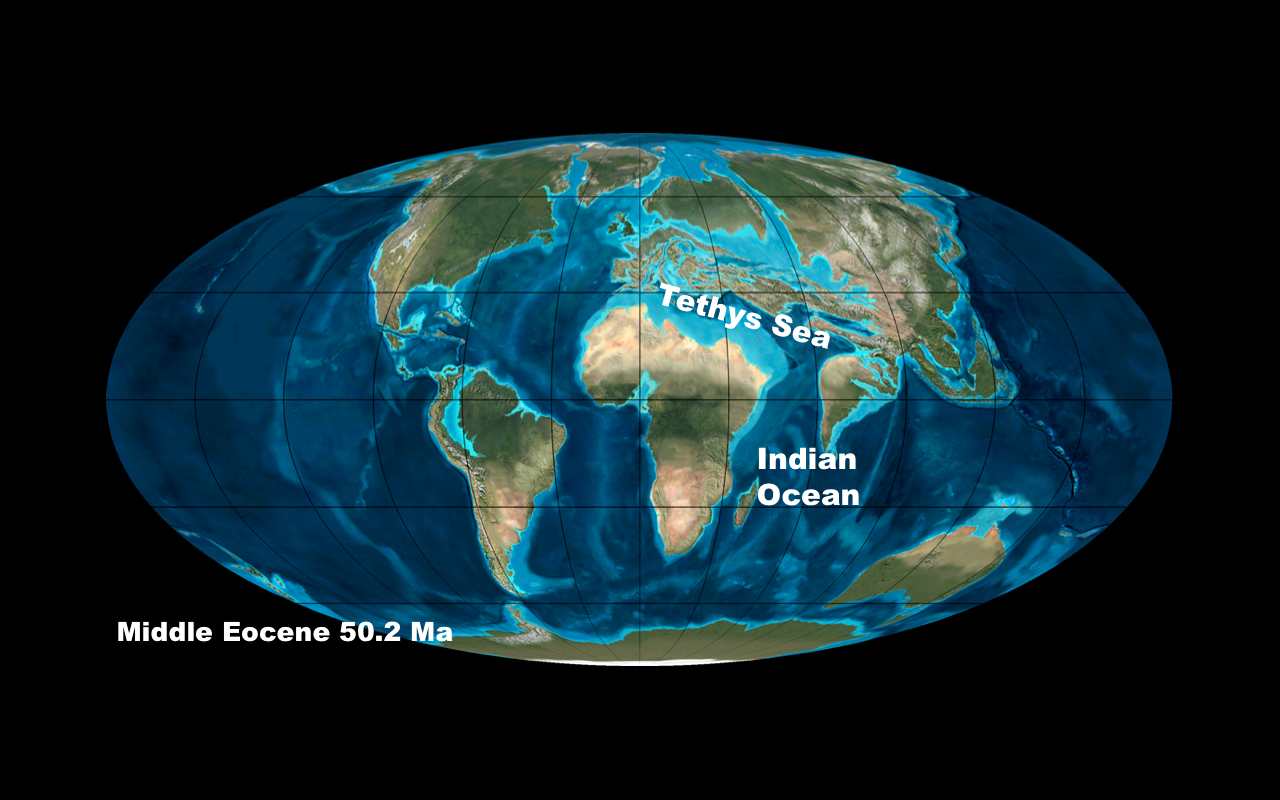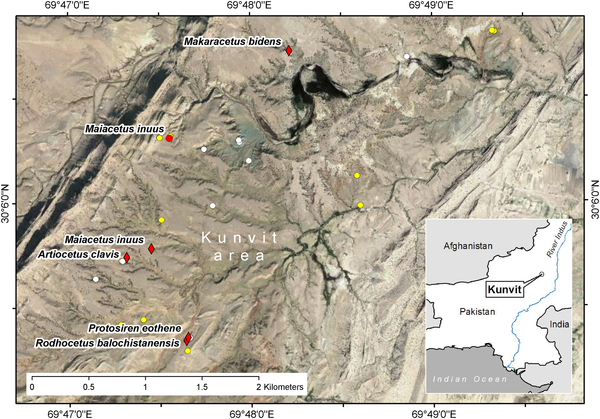Habitat and Geography
The
Maiacetus inuus roamed the shores of the Tethys Sea when the
Indian Ocean and Mediterranean Sea were continuous. The
Maiacetus inuus were preserved in the Habib Rahi formations
when the water levels of the Tethys S ea
were falling (Gingerich et al. 1998). The rock
structure from the Habib Rahi Formation to the Domanda Formation
indicates a shallowing of the marine environment (Gingerich et
al. 1998). These lithological changes took place before the
final closure of the Tethys Sea and the formation of the Himalaya
Mountains (Gingerich et al. 1998). The falling water levels
may indicate that the Maiacetus inuus skeletons were
preserved near the shore. This Protocetid whale lived during the
Middle Eocene in Pakistan (Gingerich et al. 2009).
ea
were falling (Gingerich et al. 1998). The rock
structure from the Habib Rahi Formation to the Domanda Formation
indicates a shallowing of the marine environment (Gingerich et
al. 1998). These lithological changes took place before the
final closure of the Tethys Sea and the formation of the Himalaya
Mountains (Gingerich et al. 1998). The falling water levels
may indicate that the Maiacetus inuus skeletons were
preserved near the shore. This Protocetid whale lived during the
Middle Eocene in Pakistan (Gingerich et al. 2009).
Forty-seven million
years later in Kunvit, an eastern Balochistan Province of Paki stan,
three skeletons with four limbs were found in marine sedimentary
rocks (Gingerich et al. 2009). This discovery tells
us that the creature was amphibious, living in both water and on
land. The coast provided plenty of breeding room and food for the
species. This supports the idea that Maiacetus had enough
area to spread out rather than compete with one another for mates
and resources (Gingerich et al. 2009). It is hard to really
know about the interactions between Maiacetus inuus and
other animals because they lived so long ago, but were only recently
discovered.
stan,
three skeletons with four limbs were found in marine sedimentary
rocks (Gingerich et al. 2009). This discovery tells
us that the creature was amphibious, living in both water and on
land. The coast provided plenty of breeding room and food for the
species. This supports the idea that Maiacetus had enough
area to spread out rather than compete with one another for mates
and resources (Gingerich et al. 2009). It is hard to really
know about the interactions between Maiacetus inuus and
other animals because they lived so long ago, but were only recently
discovered.
Maiacetus inuus belongs to the family tree of today’s cetaceans, which are a varied group of aquatic mammals including the modern whales and dolphins. Researchers strongly infer that they fed at sea, preying off of fish with their shearing molars, but came ashore to rest and give birth (Gingerich et al. 2009). Other Protocetidae that lived during the same time as the Maiacetus inuus include, 15 genera and 16 species that lived from South Asia and Africa to North America (Gingerich et al. 2009). All of these species were also found in marine sedimentary rocks.
Continue to learn more about Form and Function.